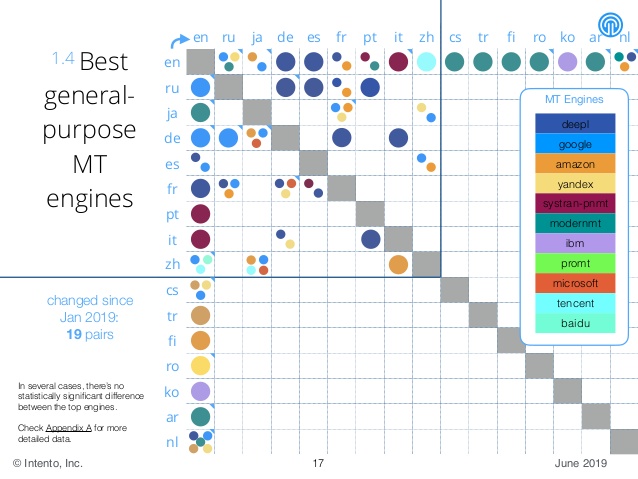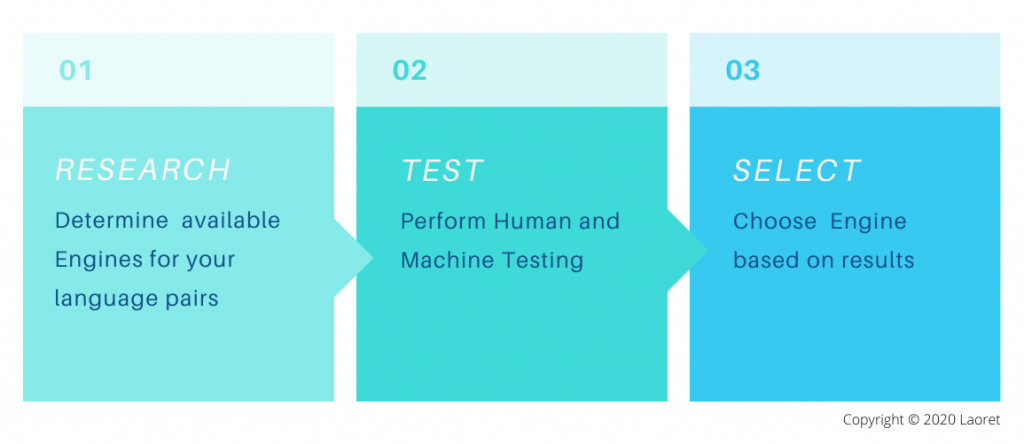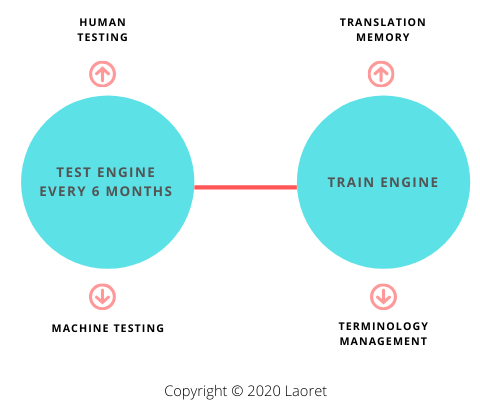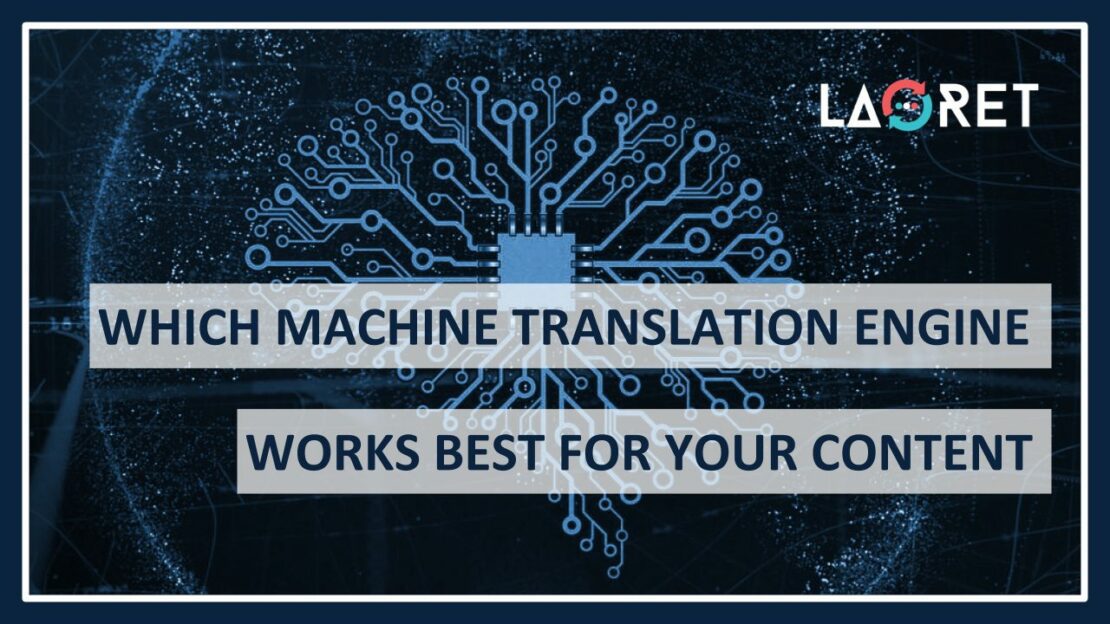Which Machine Translation Engine Works Best For Your Content?
When it comes to selecting a Machine Translation Engine, it may seem like a daunting task to find the one that will offer you the best possible performance and, most important of all will continue to do so. The fact is that while there are parameters that will determine the most suitable engine for your translation projects, the only assurance you have of continued quality, is through a continuous effort on your part.
Let us expand on how you can best leverage our internal testing analysis log as well as other sources, engines, and information out there, and why the correct Machine Translation Engine could be a lucrative investment for your content translation strategy, rather than a one-time choice.
How To Choose Your Machine Translation Engine(s)
From the available Machine Translation Engine types on the market, Neural Machine Translation Engines (NMT) are showing the most advanced features and progress. Most Languages Service Providers (LSP) are edging towards implementing NMT into their translation strategy, while Statistical Engines still have a loyal following based on their performance with certain language pairs. And it is in this compatibility with language pairs, that you will achieve the most productive results.

According to annual studies1 on Machine Translation Engine performance in connection with language pairs, with the above-listed graph presenting the most recent results. So that’s right, Google Translate doesn’t work for everything! While the Statistical Machine Translation Engine DeepL is still the staple MT-Engine for some of the most popular languages paired with English such as German, French, Spanish, Portuguese, and Italian perform best with NMT Systran and Modernmt. Russian and Japanese seem to edge towards Google’s MT engines while Chinese to English translations and vica versa, remains reliable with Tencent and Baidu.
Since you will likely be translating your content into more than one language, prepare to combine several MT-Engines and note that due to the speed of MT-Engines’ evolution, these results are time-sensitive. Most languages offer more than one possible engine, so make sure to test them!
Why Language Pairs But Not The Content Type?
As you know, every language possesses a unique, internal structure that introduces equally unique translation challenges. Committing to an engine that benefits the quality of the linguistic output, can vastly improve your productivity since awkward translations and unnatural sounding text will be kept to a minimum. While Custom NMT Engines can be trained in certain content types and data, which can be very useful for the more technical content, there is no one engine to perfectly match your content. In fact, the most popular engines deliver only a minimal difference based on the topic.
Note: Not every type of project would benefit from a Machine Translation. If you need to speak creatively to a specific locale or market, such as through advertising and marketing materials, it is better to consider transcreation services. The Post-Editing Process can polish most other types of content into a deliverable product and we highly recommend that you always follow a Machine Translation with Post-Editing. This particularly applies to content that has industry-specific jargon and possesses sensitive information where inaccuracy can cause potential harm to your business, such as legal and medical content.
Perform Human And Machine Translation Testing
We recommend that you eventually select 2 or 3 compatible TM engines per language pair. Distribute them amongst your Translation team who will run a generous sample source text (around 50 pages) through the engines and provide you with a Performance Report based on:
- Information Quality: Check if the translation follows the original structure of the source text and if there are any factual errors
- Linguistic Quality: Read for linguistic details such as grammatical and syntactical errors, as well as any translations that sound unnatural in the target language
- Translation Quality: Determine the general accuracy, consistency, completeness, and precision of the output
- Fitness for Purpose: Does the translation measure up against your content and quality goals and does it suit your target locale?
If there are several engines producing equal results, go for the one that will prove to be the most profitable for you, and increase your productivity.

Discover the Ultimate Guide to
Machine Translation Post-Editing
A free, comprehensive guide that answers all
the questions we have ever been asked.
In terms of quality machine translation testing, algorithms such as BLEU (also called BLEU scores) are equipped to verify the Multidimensional Quality Metrics (MQM) of Accuracy, Terminology, Fluency, Style, Locale Convention, Verity, and Design. While Machine Testing definitely still has quite a way to go, the availability of pre-trained, contextual language models like Google’s BERT, are paving the way for a more complex generation of Quality Metrics, ensuring more reliable testing environments with an increase in Machine Translations adopting human judgment to English and vica versatrMachine
Commit To Continuous Testing And Training
Machine Translation is a growing market2 and is projected to reach $983.3 Million by 2022, more than double of what it was 2016. To keep up with the growing demand for fast and accurate translations, MT-Engines are upping the game and reinventing themselves constantly. That’s why it is extremely important to connect with a reliable Language Service Provider, to build a personalized testing analysis log for your machine-translated content to see the whole overview and landscape of any potential performance shifts of MT engines on your content.
For example, Intento’s 2019 report3 had registered a shift in terms of MT-Engine compatibility with a variety of language pairs since as recently as July of 2018. This is why we recommend that you commit to rigorous testing and re-evaluate the use of your MT-Engine quarterly or at least twice a year. Next to the testing, continuously train and/or customize your engines so that they are able to provide more accurate, high-quality output over time through:
- A well-stocked Translation Memory (TM).
- Specialized Terminology Management.
- Live Translation for Adaptive Machine Translation.

Machine Translation Engine Potential And Context
Good news may be coming for those concerned with the correlation between context and MT potential in the near future since progress is being made4 in this area as well. We all know that context is paramount in obtaining quality MT output, but with the usual application of sentence-to-sentence translation, it is very easily lost and there is nothing much we can personally do to improve on it (e.g. Esta es su casa can mean either her, his or your house which is impossible to discern without the rest of the text). Popular Statistical Engine DeepL started to show initial signs of context-awareness in 2019, by utilizing previously translated sentences in its output. This development is bound to spread to other popular engines, making our job to produce accurate content all the more convenient.
Leverage and Refine On Your Own Terms
Once you reach a satisfactory quality outcome of Post-edited machine translation (PEMT), it is essential to build up a Translation Memory (TM) so you can reutilize the edited translation in the future. It is best to start by training a Custom Machine Translation engine and feed it with your PEMT. This will be very beneficial moving forward in terms of receiving a more personalized translation that is tailored to your content.
Conclusion
Introducing the right MT-Engines to your translation workflow is an ongoing process that involves repeated testing and in the case of deep learning and adaptive machines, training. As an industry amidst rigorous expansion, MT-Engines invite clients to always stay connected and be open to reinventing their methods when new technologies are introduced that can maximize the translation process. Part of this, is understanding that MT Engines are part of a strategy much like human translation, and that your translation service should reflect your content goals and strategies.
At Laoret, we are always open with our clients when it comes to which methods would suit their machine translation goals and their target audience’s needs. With our technical authority, we are able to customize and train your MT-Engines to fit your content strategy and source and target languages and provide the best execution of machine translation post editing. Prior to the customization and training, we can assist you in establishing guidelines for your brand identity and tone in the form of glossaries and a linguistic style guide.






